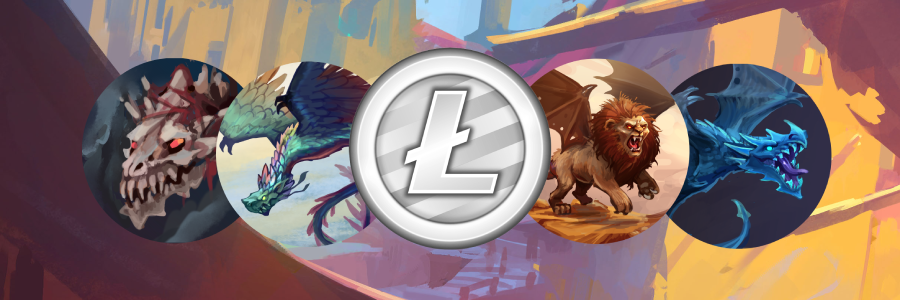LiteBringer does use tokens, but in a very different way compared to games working on Ethereum or any other Blockchain using smart contracts.
LiteBringer does use tokens, but in a very different way compared to games running on Ethereum or any other Blockchain using smart contracts. For example, an ERC-20 token is an asset on the Ethereum blockchain. But it can also represent a specific asset in the game.
We do not use this technology. We use so called colored coins to exchange data. It is comparable to paying with a bank transfer which allows the owner of the bank account to specify the purpose of the transactions. Colored coins have a special place where short messages can be stored. So, there are no tokens, just colored coins. But because they fulfill similar tasks, we will use the word ‘token’ for these special coins.
In LiteBringer a token is only used while trading. It guarantees that players receive the item or resource they paid for. It is probably better to compare a token to a colored coin than an ERC-20 token. The token is basically an extremely small fraction of a Litecoin.
A selling offer is split into 2 separate transactions: The first transaction provides an encoding of the assets which will be sold and the second one a trading token.
Even though Litecoin was designed to be used as a currency, its scripting language allows small amounts of metadata to be stored on it. This 80-byte space is all we need to encode all relevant game operations. While several different ways of decoding information had already existed when we started developing LiteBringer, we nevertheless decided to create our own unique method.
Since only the owner of a token/coin can use the token/coin, we provide a signature with the second transaction, enabling the buyer to make use of it as well. The signature also determines what a valid transaction has got to look like.
The transaction is encrypted, therefore the buyer does not know what the transaction should look like without any further information. For that reason, the second transaction also contains information about the price.
If someone decides to buy an offer he combines the token provided by the seller’s first transaction and backs it with coins of his wallet. When hashed, the transaction will look exactly like the signature prescribes it, making it valid.
To give access to the sold items, no further transaction is needed. It will be conclusive who used the created token because all of these transactions are stored in the blockchain. For the clients, the owner of a sold asset is always the player who used the associated token in a valid transaction.
